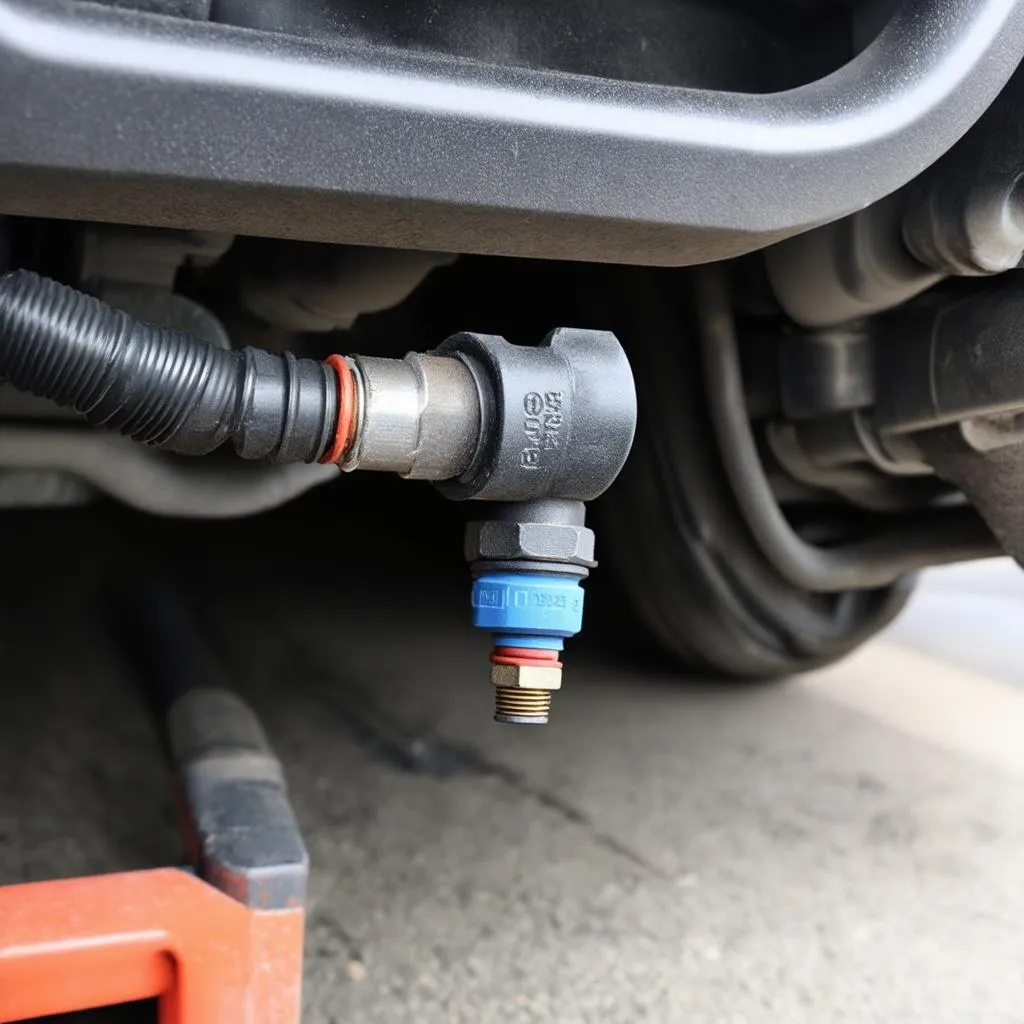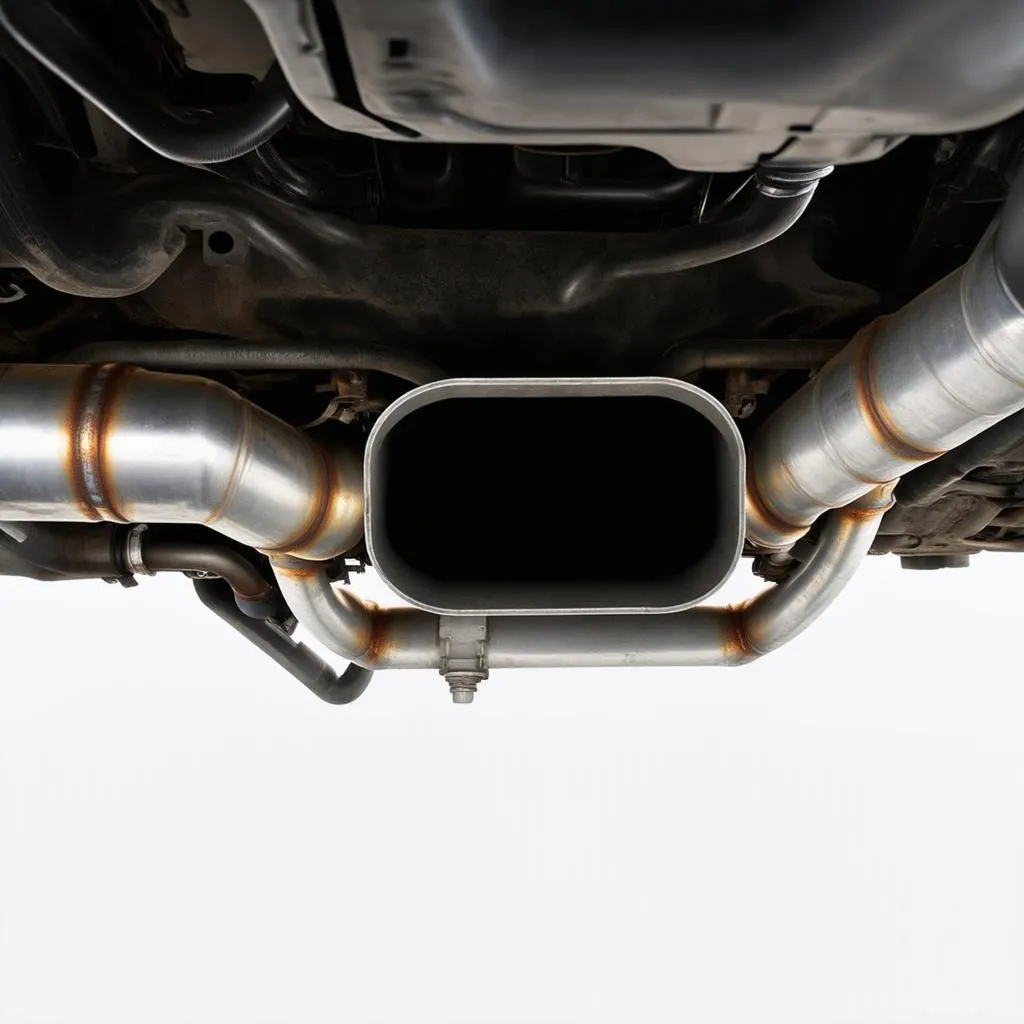Have you ever encountered a blinking check engine light in your car, leaving you feeling like a detective investigating a mysterious case? Well, imagine this: you’re cruising down the highway, enjoying the open road, when suddenly your car’s check engine light pops on, accompanied by a dreaded P2097 code. What does it mean? Is it a sign of a serious problem? Fear not, dear reader, for we’re about to delve into the world of Obd P2097 codes and unlock the secrets behind this enigmatic message.
Understanding Obd P2097
The OBD P2097 code, also known as “Post Catalyst Fuel Trim System Too Rich (Bank 1)”, is a sign that your car’s engine control module (ECM) has detected an imbalance in the fuel-to-air ratio in the exhaust manifold after the catalytic converter.
Think of it like this: your car’s engine is like a delicate orchestra, and each component plays its part to create a symphony of smooth and efficient operation. The fuel and air mix, like a carefully orchestrated melody, is crucial for optimal performance. However, when the P2097 code appears, it’s like a musician playing a discordant note, throwing the entire harmony off balance.
Why Does This Happen?
The P2097 code can be triggered by a variety of factors, including:
- Faulty oxygen sensor: The oxygen sensors in your car are like the ears of the ECM, monitoring the air-fuel ratio in the exhaust system. A faulty oxygen sensor can send inaccurate readings to the ECM, causing it to misinterpret the fuel-to-air mix.
- Clogged catalytic converter: The catalytic converter is like a filter for your car’s exhaust, removing harmful pollutants. A clogged catalytic converter can restrict exhaust flow, leading to a rich fuel mixture.
- Air leak in the intake manifold: An air leak in the intake manifold can disrupt the air-fuel mixture, causing the ECM to overcompensate with fuel delivery.
- Faulty fuel injectors: Fuel injectors are responsible for precisely spraying fuel into the engine. If a fuel injector is clogged or malfunctioning, it can result in excessive fuel delivery.
- Vacuum leaks: Vacuum leaks can also disrupt the air-fuel mixture, leading to a rich condition.
How to Troubleshoot P2097
The best way to diagnose and fix the P2097 code is to use a diagnostic scanner, such as the Dealer Scanner for European Cars. This professional-grade tool can read and interpret OBD codes, providing valuable insights into the underlying problem.
Here’s a step-by-step guide to troubleshooting P2097:
- Use a scanner: Connect the scanner to your car’s OBD port and retrieve the P2097 code.
- Check for oxygen sensor issues: Start by inspecting the oxygen sensor(s) located in the exhaust manifold. Look for any signs of damage, corrosion, or loose wiring. You can also check the sensor’s resistance using a multimeter.
- Inspect the catalytic converter: Visually inspect the catalytic converter for any signs of damage, such as cracks or blockages. You can also check the converter’s temperature using an infrared thermometer.
- Test for vacuum leaks: Check for vacuum leaks in the intake manifold and related hoses. You can use a vacuum gauge or smoke test to locate leaks.
- Inspect fuel injectors: Check the fuel injectors for signs of clogging or leaks. You can use a fuel injector cleaning solution or a pressure test to diagnose issues.
How To Fix P2097 Code
Once you have identified the root cause of the P2097 code, you can take the necessary steps to fix the problem. This may involve:
- Replacing a faulty oxygen sensor
- Replacing a clogged catalytic converter
- Repairing or replacing faulty fuel injectors
- Repairing vacuum leaks
- Replacing or cleaning the air filter
Frequently Asked Questions
Q: How serious is the P2097 code?
A: While the P2097 code can be a sign of a serious problem, it’s not necessarily a cause for immediate panic. However, it’s essential to address the issue promptly to prevent further damage to your car’s engine.
Q: Can I drive my car with the P2097 code?
A: It’s generally safe to drive your car with the P2097 code for a short distance. However, it’s best to get the problem diagnosed and repaired as soon as possible.
Q: Can I reset the P2097 code myself?
A: You can reset the P2097 code using a diagnostic scanner or by disconnecting your car’s battery for a few minutes. However, resetting the code without addressing the underlying issue will only temporarily solve the problem.
Q: What happens if I ignore the P2097 code?
A: Ignoring the P2097 code can lead to a variety of problems, including:
- Reduced fuel efficiency: A rich fuel mixture can make your car burn more gas than usual.
- Engine misfires: Excessive fuel can cause engine misfires, leading to rough idling and reduced performance.
- Damage to the catalytic converter: A consistently rich fuel mixture can damage the catalytic converter.
- Increased emissions: A rich fuel mixture can lead to higher emissions, contributing to air pollution.
Related Products & Services
- Dealer Scanner for European Cars: This professional-grade diagnostic tool can read and interpret OBD codes, including the P2097 code.
- Oxygen Sensor: If your oxygen sensor is faulty, it’s essential to replace it with a new one.
- Catalytic Converter: A clogged catalytic converter will need to be replaced.
- Fuel Injectors: If your fuel injectors are faulty, you can replace them or get them cleaned.
 Oxygen Sensor
Oxygen Sensor
 Catalytic Converter
Catalytic Converter
Conclusion
The P2097 code can be a confusing and frustrating problem, but with the right knowledge and tools, you can troubleshoot it effectively and get your car back on the road. Remember, it’s essential to diagnose the underlying issue and address it promptly to prevent further damage to your engine and maintain your car’s performance.
If you’re experiencing a P2097 code or any other automotive issues, don’t hesitate to contact us at Whatsapp: +84767531508. Our team of automotive experts is available 24/7 to provide guidance, support, and personalized solutions.